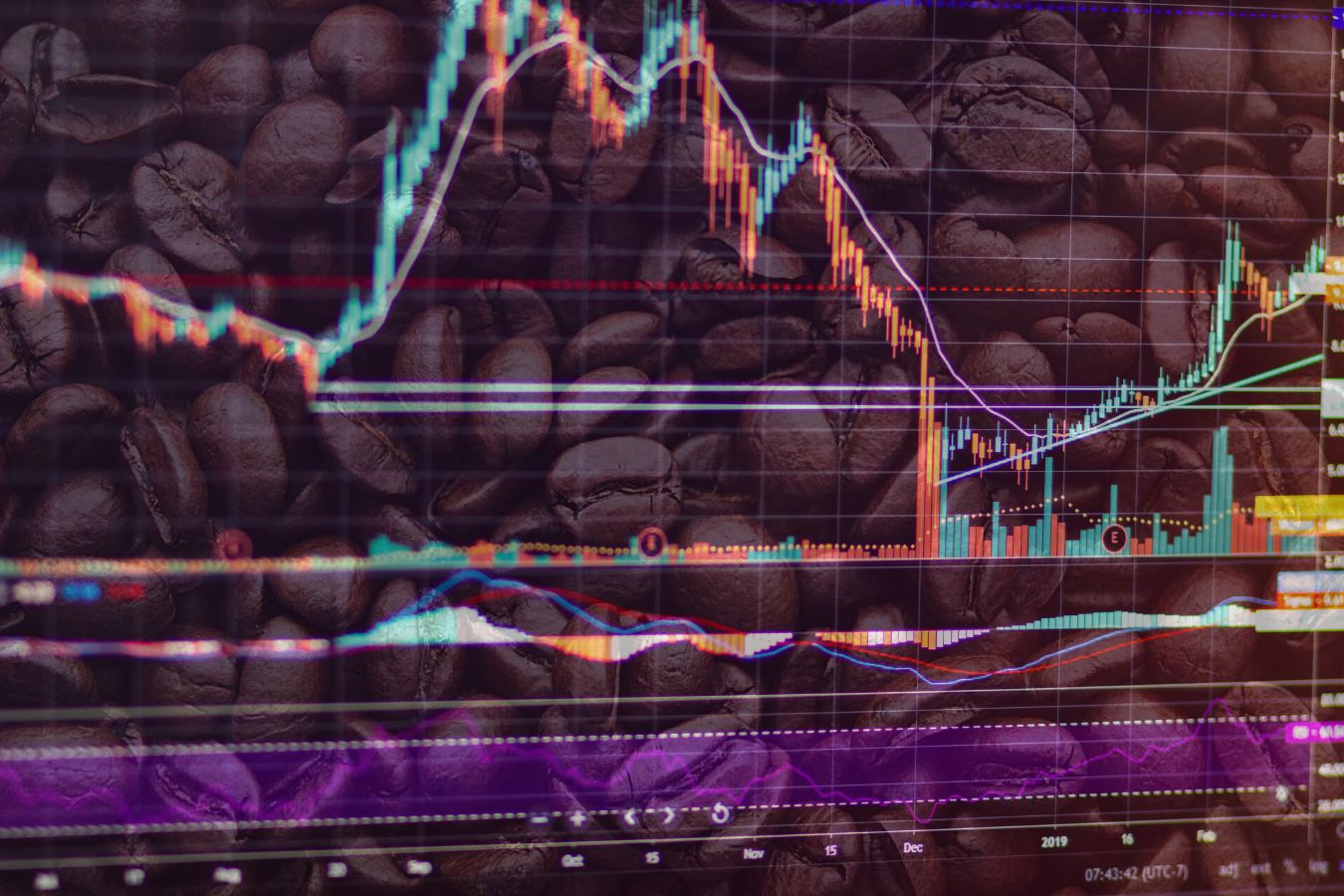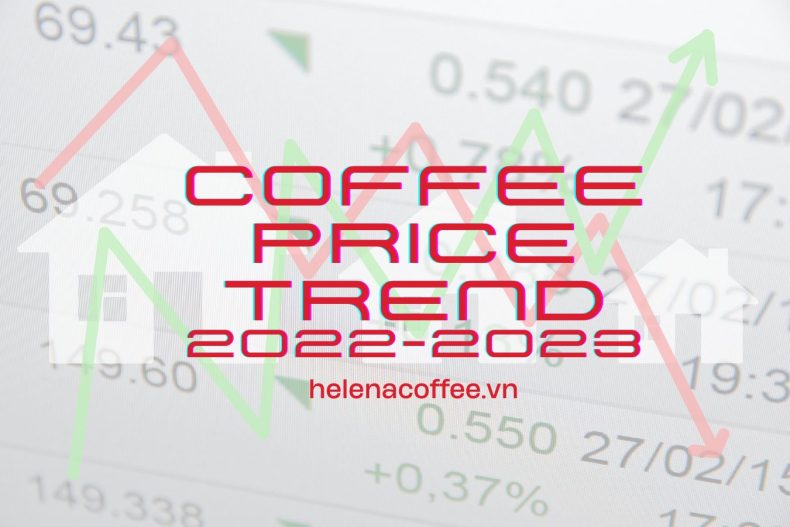
Understanding the Coffee Price Trend: The journey of coffee from the farm to your cup is not as simple as it may seem. Behind each sip, a whole web of global economic systems intertwines, ultimately affecting the price of your favorite brew. The price of coffee on the international market has been subject to significant fluctuation throughout history. Understanding these coffee price trends necessitates an examination of the factors driving changes, the impacts on producers and consumers, and the possible future direction of these prices.
Decoding the Brew: Key Determinants of Coffee Price Trend Fluctuations
Underlying Factors:
- Weather Patterns and Climate Change: The largest coffee producers are countries in the “Bean Belt,” including Brazil, Vietnam, Colombia, and Ethiopia. These countries’ climates greatly influence coffee production, and unexpected weather events can lead to significant price fluctuations. In recent years, the effects of climate change, such as irregular rainfall and increasing temperatures, have caused unpredictable crop yields, affecting coffee prices.
- Market Demand: Demand trends in consumer countries also significantly affect coffee prices. The consumption pattern in major coffee-drinking nations such as the U.S., the EU, and increasingly in Asia, drives the global coffee price trend.
- Global Economy: The health of the global economy impacts disposable income and, therefore, coffee demand. Economic recessions often lead to reduced demand for non-essential commodities, including coffee, which can drive prices down.
The Ripple Effect: The Impact of Coffee Price Fluctuations on Producers and Consumers”
- On Producers: The Perfect Storm of Uncertainty and Vulnerability
One of the most direct and profound impacts of coffee price volatility is felt by coffee producers, especially the small-scale farmers who are typically found in developing countries. These farmers often grapple with a precarious existence as they are disproportionately affected by changes in global coffee prices.
On Producers: The volatility of coffee prices can create significant uncertainty for coffee farmers, particularly those in developing countries, who are typically the most vulnerable in the supply chain.
The case of Brazilian farmers in the late 2010s provides a vivid example. As Brazil is the world’s largest coffee producer, their farmers are particularly susceptible to price shifts. In 2018, when international coffee prices dropped due to an oversupply in the market, many Brazilian farmers found themselves unable to cover their production costs, creating significant financial strain and pushing some to the brink of bankruptcy.
- On Consumers: From Future Markets to the Coffee Cup
While consumers in cafes around the world might be somewhat insulated from immediate or proportional price increases when there’s volatility in the coffee futures market, they are not entirely immune to these fluctuations. The cost of that daily cup of coffee is likely to increase when the commodity prices trend upwards for a sustained period.
A prime example is the impact of the 2014 coffee leaf rust epidemic, which devastated coffee plantations across Central America. The diminished supply of coffee beans led to a surge in coffee prices on the futures market. While consumers didn’t feel the pinch immediately, the prolonged nature of the crisis eventually resulted in higher retail prices for coffee. In the US, for instance, a number of major coffee chains, including Starbucks, raised their prices to offset the increased cost of raw coffee beans.
These instances illustrate that while the journey of coffee from the farm to the cup is a long one, events at each step of the process can have a profound influence on both the people who grow it and those who enjoy it.
On Consumers: While price increases in the coffee futures market don’t always translate into immediate or proportional price increases for consumers, sustained price hikes often lead to more expensive coffee in the long run.
Forecasting the Grind: Projections on Future Coffee Price Trends”
- The Crystal Ball of Coffee Trends: Unpredictability and Influencing Factors
Predicting the future trends of coffee prices is not a straightforward task, given the array of unpredictable elements involved. Nonetheless, a few key factors are likely to play substantial roles in shaping these trends in the coming years.
- A Storm in the Cup: Climate Change and Production Pressures
Climate change poses a substantial threat to coffee-growing regions, with the potential to dramatically alter the landscape of coffee production. Rising global temperatures, changing rainfall patterns, and increasing instances of extreme weather events are putting stress on coffee crops.
For instance, the International Coffee Organization predicted in 2019 that the suitable land for coffee production in Brazil and Central America could decrease by up to 50% by 2050 due to climate change. As coffee supply dwindles under these pressures, we can expect a consequential rise in coffee prices due to a simple supply-demand dynamic.
- The Asian Affection for Coffee: Growing Demand and Rising Prices
In recent years, coffee consumption in Asia has seen an upward trend, particularly in countries like China and India, traditionally tea-drinking nations. According to the International Coffee Organization, China’s coffee consumption has grown by an annual average rate of 16% since 2004. This increasing demand in emerging markets could drive up coffee prices if the demand continues to outstrip the global coffee production capacity.
- From Green Beans to Green Practices: Sustainability Efforts and Cost Implications
The coffee industry is also experiencing a shift towards more sustainable and fair-trade practices. This is partly driven by consumer preference for ethically sourced products and partly due to the need to mitigate the impact of climate change. Fairtrade coffee often involves higher costs, with farmers being paid a minimum price plus a Fairtrade Premium.
This transition towards sustainable coffee growing practices was highlighted by Starbucks’ commitment in 2020 to make their operations “resource-positive” by 2030. As these efforts grow, the increased costs of production might translate into a long-term upward trend in coffee prices, reflecting the cost of sustainable and ethical coffee production.
While the path of future coffee prices is not set in stone, these factors provide a potential roadmap for where we might be heading, shaping the story of your future cups of coffee.
Conclusion:
Coffee Price Trend: The trend of coffee prices is influenced by a complex interplay of factors from weather patterns and climate change to shifts in global demand and the economic climate. While the future remains uncertain, understanding these dynamics helps paint a clearer picture of how your morning cup of coffee might be priced moving forward. As consumers, awareness of these issues can also guide more informed and sustainable coffee consumption habits.
